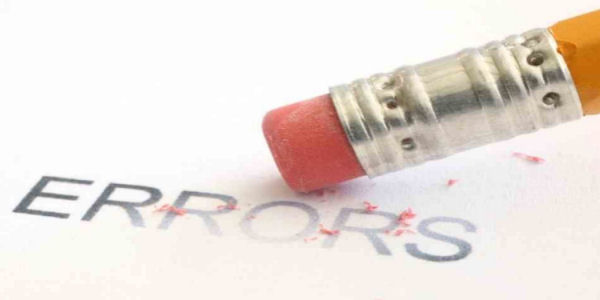Accounting
5 Common Errors Found In Valuation Reports
One way to minimize error is to know the common pitfalls of valuations. Sageworks and Chartwell collaborated to produce a practice aid listing 15 common errors found in valuation reports. The complete list is available for download here, but here are ...
Apr. 13, 2016

Nobody’s perfect.
Indeed, even when you use spreadsheets to try to reduce errors, there’s a good chance of a mistake. One 2008 report combining data from multiple studies of spreadsheet errors noted that 88 percent of spreadsheet documents audited in these studies contained errors. “For large spreadsheets, the issue is how many errors there are, not whether an error exists,” said report author Ray Panko, a professor of IT management at the University of Hawaii and an authority on bad spreadsheet practices, in his report.
Human error – whether it’s in entering data into cells or in the understanding of a concept – is one of the by-products of analyzing financial data. But firms conducting valuations must be especially careful to guard against errors.
“You could come up with a result that is significantly off if you have errors in your spreadsheets and in your calculations,” said Rachel Flaskey, vice president of Chartwell, a national financial advisory and valuation services firm. “And people are making business decisions based on the number you, as the valuation professional, are coming up with. It could be a buy or sell decision, it could be a gift or estate decision, it could be whether you’re going to allow someone to buy into your company or let employees buy stock. If the number is wrong, everything you do based on that information is inaccurate.”
For example, if you’re preparing a valuation for a buyer and the number is significantly high, it’s likely to cost the company money, or it might mean the transaction could fall apart, Flaskey said. Or if the number is too low in the case of an employee stock ownership plan, it could mean someone’s retirement account is affected by the lower valuation.
One way to minimize error is to know the common pitfalls of valuations. Sageworks and Chartwell collaborated to produce a practice aid listing 15 common errors found in valuation reports. The complete list is available for download here, but here are five of the common errors found in valuation reports:
Valuations using the income approach
- Using a long-term growth rate that is significantly above the projected growth in the economy.
Valuations using the asset approach
- Not considering or separately valuing the intangible assets owned by the business, such as developed software or patents.
Valuations using the market approach
- Using dated transaction data when conditions in the industry have changed significantly from the time the earlier transactions occurred.
- Failing to show the transactions and multiples relied upon in the report.
Other
- Failing to explain why certain valuation methods were chosen or rejected.
Flaskey said some errors can be due to a general lack of understanding on the part of the valuation professional. “When we see a lot of these errors, it’s generally somebody who doesn’t do business valuations as a profession,” she said. “It maybe something they’re doing on the side or infrequently and they’re not even aware that they’re making these mistakes.”
“Make sure you’re educated on the valuation methodologies you’re using and understand the dynamics of your model,” she said.
Another potential cause? Failing to conduct a thorough review of your numbers and your report. Flaskey said it’s critical to have a good quality control process for your valuation engagements.
“Make sure you have a peer at the firm or a colleague who’s willing to do some sort of review,” she said. “After working in a project so long, you can become blind to what those errors might be.”
